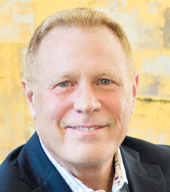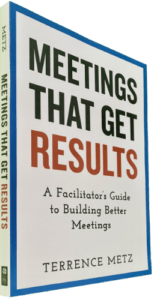Nonverbal expressions, like words (see Facilitate Meaning, Not Words), connote multiple messages.
After you finish this article, you will be strongly tempted to embrace the MGRUSH recommendations. Keep your elbows tucked in, your hands below your heart, and keep them open, facing up. Some would call this approach, keeping your hands to yourself.
 For example, extending the index and little fingers upward, with a fist, shaped like a “V” (with the middle and ring fingers tucked down into the palm, along with the thumb) can signify victory or good luck in the Americas. The same non-beral gesture represents a vulgar insult in Italy.
For example, extending the index and little fingers upward, with a fist, shaped like a “V” (with the middle and ring fingers tucked down into the palm, along with the thumb) can signify victory or good luck in the Americas. The same non-beral gesture represents a vulgar insult in Italy.
A single thumb up, commonly used to express “all right” in the United States, counts as the number one in Germany, the number five in Japan, and is seen as a vulgar insult in Afghanistan, among other places (akin to the middle finger prone upward in the United States).
 Scuba divers universally acknowledge the clasping of the thumb and index finger into a circle (or, “AOK”) as the buddy signal that all is fine. The circle will be perceived as a vulgar insult in Russia and Italy. However, it signifies “pay me” in Japan and displays a sense of “worthless” in France.
Scuba divers universally acknowledge the clasping of the thumb and index finger into a circle (or, “AOK”) as the buddy signal that all is fine. The circle will be perceived as a vulgar insult in Russia and Italy. However, it signifies “pay me” in Japan and displays a sense of “worthless” in France.
Yes or No?
Even a simple nod of the head from side to side typically signifies “no” or “I’m not in agreement” in the United States. However, it may signify “yes” or “no problem” in India and elsewhere. The slight vertical nod of the head up and down signifies “I’m OK with it” in the United States. But it may signify “no” or “I don’t see it” in Greece and elsewhere.
While nonverbal cues are intended to simplify understanding, it is rather apparent that they can obfuscate consensus in a multicultural setting. As with everything, context is critical to understanding, and the role of the facilitator is to police context on behalf of the participants—so be careful, and keep your hands to yourself.
______
Don’t ruin your career by hosting bad meetings. Sign up for a workshop or send this to someone who should. MGRUSH workshops focus on meeting design and practice. Each person practices tools, methods, and activities every day during the week. Therefore, while some call this immersion, we call it the road to building high-value facilitation skills.
Our workshops also provide a superb way to earn up to 40 SEUs from the Scrum Alliance, 40 CDUs from IIBA, 40 Continuous Learning Points (CLPs) based on Federal Acquisition Certification Continuous Professional Learning Requirements using Training and Education activities, 40 Professional Development Units (PDUs) from SAVE International, as well as 4.0 CEUs for other professions. (See workshop and Reference Manual descriptions for details.)
Want a free 10-minute break timer? Sign up for our once-monthly newsletter HERE and receive a timer along with four other of our favorite facilitation tools, free.
Related articles
- Change Your Thoughts, Change Your Life (mgrush.com/blog)
- Five Reasons to Hold a Facilitated Session (mgrush.com/blog)
- Facilitate Meaning, Not Words (mgrush.com/blog)

Terrence Metz, president of MG RUSH Facilitation Training, was just 22-years-old and working as a Sales Engineer at Honeywell when he recognized a widespread problem—most meetings were ineffective and poorly led, wasting both time and company resources. However, he also observed meetings that worked. What set them apart? A well-prepared leader who structured the session to ensure participants contributed meaningfully and achieved clear outcomes.
Throughout his career, Metz, who earned an MBA from Kellogg (Northwestern University) experienced and also trained in various facilitation techniques. In 2004, he purchased MG RUSH where he shifted his focus toward improving established meeting designs and building a curriculum that would teach others how to lead, facilitate, and structure meetings that drive results. His expertise in training world-class facilitators led to the 2020 publication of Meetings That Get Results: A Guide to Building Better Meetings, a comprehensive resource on effectively building consensus.
Grounded in the principle that “nobody is smarter than everybody,” the book details the why, what, and how of building consensus when making decisions, planning, and solving problems. Along with a Participant’s Guide and supplemental workshops, it supports learning from foundational awareness to professional certification.
Metz’s first book, Change or Die: A Business Process Improvement Manual, tackled the challenges of process optimization. His upcoming book, Catalyst: Facilitating Innovation, focuses on meetings and workshops that don’t simply end when time runs out but conclude with actionable next steps and clear assignments—ensuring progress beyond discussions and ideas.




Hi, thank you for your resources.
Just one quick correction: the one thumb up gesture is not a vulgar sign in Brazil. It actually communicates “cool”.
Glad to help.
Thanks kindling Viviane, Much appreciate the fix. Happy holidays to you and yours.